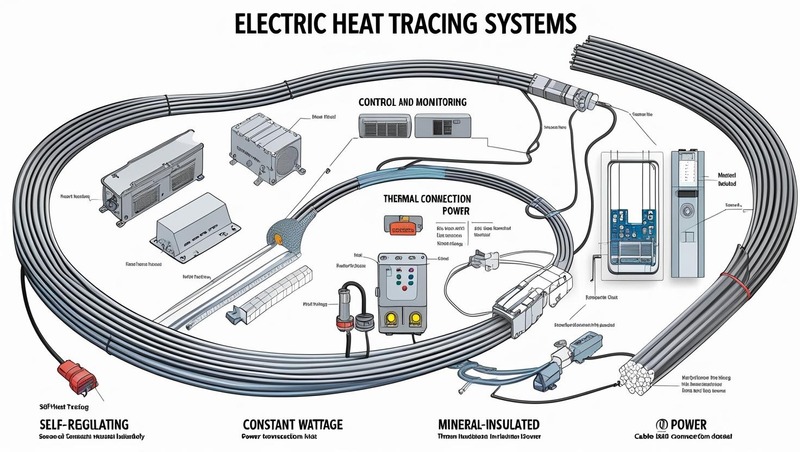The electric heat tracing market is witnessing robust growth as industries across various sectors prioritize efficient temperature maintenance and freeze protection solutions. Electric heat tracing systems, which use electrical heating elements to maintain or raise the temperature of pipes, vessels, and equipment, are increasingly being adopted in oil & gas, chemical, power, food & beverage, and water treatment industries. With rising emphasis on energy efficiency, safety, and automation, the market is poised for significant expansion during the forecast period from 2024 to 2029.
One of the primary trends shaping the electric heat tracing market is the growing integration of smart control systems. Modern heat tracing solutions now incorporate advanced control panels, IoT-based monitoring systems, and predictive maintenance capabilities that allow for precise temperature management and reduced operational costs. The adoption of digital solutions in industrial infrastructure is not only enhancing the reliability of heat tracing systems but also helping in reducing downtime and optimizing energy usage.
Download PDF Brochure @ https://www.marketsandmarkets.com/pdfdownloadNew.asp?id=88678555

The oil & gas sector remains a major end user of electric heat tracing systems, particularly for pipeline freeze protection and viscosity maintenance in harsh environments. The continued exploration and production activities in cold regions and offshore platforms are driving demand for robust and energy-efficient heat tracing technologies. Furthermore, the chemical and petrochemical industries rely on heat tracing systems to prevent crystallization and ensure process continuity, thus contributing significantly to market growth.
Environmental concerns and regulatory mandates regarding energy consumption and safety are also pushing industries to shift from steam-based systems to electric heat tracing solutions. Electric systems offer more precise control, lower heat losses, and a reduced environmental footprint compared to traditional alternatives. Additionally, the growing trend of electrification in industrial heating systems is further amplifying the adoption of electric heat tracing.
Geographically, North America and Europe dominate the electric heat tracing market due to stringent industrial safety standards, cold climatic conditions, and early adoption of automation technologies. However, the Asia-Pacific region is expected to witness the highest growth rate during the forecast period, fueled by rapid industrialization, infrastructure development, and growing investments in oil & gas, chemical, and power generation sectors. Countries such as China, India, and Southeast Asian nations are particularly emerging as key markets for electric heat tracing providers.
The market is also being driven by advancements in heating cable technologies and insulation materials, which are enhancing the efficiency and durability of heat tracing systems. Manufacturers are focusing on product innovation and strategic partnerships to expand their global footprint and meet the diverse requirements of end users. As a result, the competitive landscape is becoming increasingly dynamic, with key players investing in R&D and offering customizable, scalable solutions tailored to specific industrial applications.
Looking ahead, the electric heat tracing market is projected to grow at a steady pace, driven by the convergence of energy efficiency goals, technological innovation, and expanding industrial activity. With growing demand for temperature maintenance solutions across critical infrastructure and process industries, the market is set to achieve significant milestones in both revenue and technological evolution by 2029.
